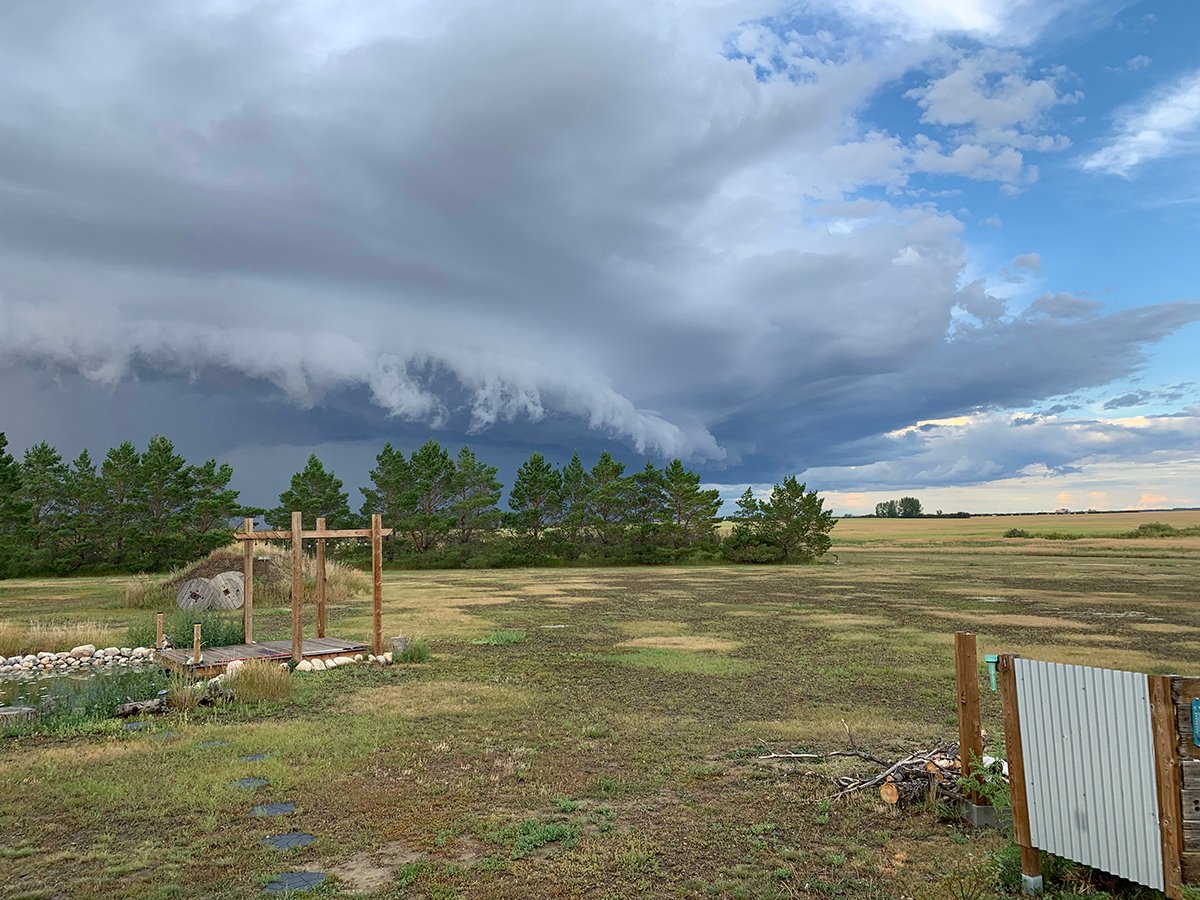Lower fed prices
This year had one of the largest first half price rallies in recent history, so it is not surprising to see a summer price correction. From their highs in late June, fed cattle prices have declined $12 per hundredweight.
The leverage shift from cattle feeder to packer is occurring, reflected in softer prices and weaker basis levels. That said, fed prices for July will average around $240 per cwt., the second highest monthly price on record.
Last week dressed sales were reported at mostly $395 per cwt. delivered. Cattle that traded were being scheduled for the second half of August delivery. For the week ending July 22, Canadian fed slaughter totalled slightly more than 52,000 head, 11 percent lower than last year. Fed slaughter volumes have been below last year in 21 out of the past 23 weeks. Over that same time period, Canadian fed beef production is down 11 percent compared to last year.
Read Also

Storm dynamics and extreme rainfall
Besides moisture, instability and orographic lift, the next biggest factor that contributes to heavy or extreme rainfall is storm dynamics.
From a supply and demand standpoint, reduced beef production and higher wholesale beef prices have led to supply rationing. In general, higher prices and limited supplies have weighed on Canadian beef exports. In April and May, beef exports were down 10 to 12 percent compared to last year.
In Ontario, dressed sales were reported from $392-$400 per cwt., steady to $3 per cwt. lower than bid/sales seen last week. Market-ready supplies should continue to increase because peak slaughter volumes usually occur during the second half of August.
In the United States, dressed sales/bids in Iowa and Nebraska were from US$294-$295/cwt., fully steady with the previous week. Sales in Texas and Kansas were from $178-$179 per cwt., $1-$2 per cwt. lower, with fed cattle prices trading near annual highs and beef cut-out values dropping close to $30 per cwt. over the past month.
Packer margins are in the red and hours are being scaled back. With extreme heat across much of the U.S., there are reports of higher feedlot mortality rates.
Ample slaughter cows
Non-fed prices eased lower last week on ample offerings and seasonally softer demand. D2 cows slipped $1.64 per cwt. lower than the previous week to average $152.21 per cwt., and D3 prices were $1.27 per cwt. lower, averaging $137.64 per cwt.
Dressed cow bids trended mostly steady from $295-$300 per cwt. delivered. Butcher bull prices dipped $2.39 per cwt. lower than the previous week, averaging $160.50 per cwt.
Western Canadian non-fed slaughter for the week ending July 22 was eight percent lower than the previous week at 6,526 head and year-to-date was seven percent larger, totalling 213,525 head.
Increased slaughter cow offerings are anticipated as late summer trim and grind demand typically soften. However, the trim and grind market is expected to remain strong as escalating retail beef prices are encouraging consumers to price down to ground beef.
Feeder price strengthens
Alberta feeder prices strengthened last week on a seasonally early offering of larger quality lots. Alberta calf prices firmed modestly higher than the previous week. Large feeders gained price momentum, and yearling heifers more than 700 pounds realigned significantly higher.
Auction volumes varied across the Prairies relative to pasture/moisture conditions, and significantly more feeders were marketed in British Columbia compared with the previous week. As a result, B.C. feeder prices moved higher and traded generally comparable with Alberta.
Saskatchewan and Manitoba sale volumes were light last week and most feeder price trends were not established. In the east, Ontario feeder trade was lacklustre and quality restricted price upside. A marked premium for October deferred delivery was observed for all types of feeders again last week.
Alberta weekly auction volumes were 158 percent larger than the previous week at 34,864 head and were a whopping 609 percent larger than the same week last year. Although feeders coming off grass early accounted for some of last week’s huge feeder offering, a significant portion of trade was electronic and scheduled for deferred August/September delivery.
Year-to-date auction volumes are up 15 percent from a year ago, totalling 741,772 head.
Increased auction volumes are anticipated as pasture conditions seasonally deteriorate.
Cutouts steady
In U.S. beef trade, cutouts showed signs of resurgence last week. Choice cutouts spent the week fully steady with the previous week, riding slightly higher than the US$300 per cwt. mark, closing at $302.86 per cwt. Select cutouts regained steam, closing 1.8 percent higher at $279.76.
Prices summarized from canfax.ca














